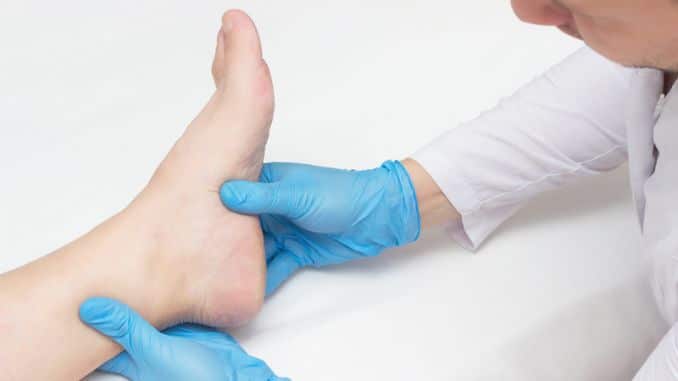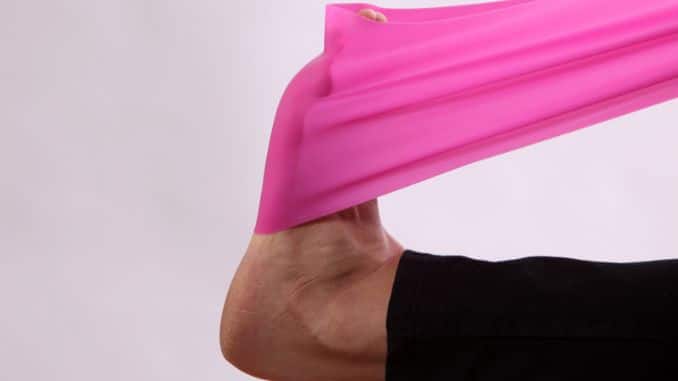
Inflammation of the plantar fascia, the ligament that runs behind your heel, may lead to a disease known as plantar fasciitis, which can cause significant discomfort. Because of this, even simple actions like walking and standing may become excruciating. However, if you do the appropriate exercises and stretches, you will soon be able to return to all your favorite activities without worrying about experiencing another episode of plantar fasciitis. Finding workouts that specifically target the problem region while minimizing the amount of pressure placed on other portions of your body is essential to achieving results. The following are some plantar fasciitis exercises that might help with plantar fasciitis.
Who is at risk of developing plantar fasciitis?
In most cases, plantar fasciitis is caused by overstretching or abuse of this ligament. However, minor rips in the fascia tissue may also lead to discomfort. The anatomy of your feet may also cause plantar fasciitis.
Plantar fasciitis is a common problem for pregnant women, especially in the later stages. The most likely to suffer from plantar fasciitis are physically active males and females aged 40 to 70. Females have a somewhat higher risk of developing the condition.
How can physicians determine the presence of plantar fasciitis?
During a physical exam, your doctor will look for soreness in your foot and the specific site of the discomfort. It ensures that a separate foot issue doesn’t cause pain.
During the assessment, they could ask you to bend your foot inside and outward to observe whether the pain worsens as you bend your foot and improves as you straighten it. They’ll also note any slight redness or swelling you could have.
Your doctor will assess your muscular strength and nerve health by examining your:
- reflexes
- muscle tone
- sense of touch and sight
- coordination
- balance
Imaging tests
The structures and tissues of your foot may also be studied using imaging techniques. An X-ray or MRI scan may be required to rule out more severe possibilities like a bone fracture as the source of your heel discomfort.
X-rays help determine the presence of bone fractures, heel spurs, and other potential causes, even though you can’t see soft tissues on an X-ray.
While this is being studied, an MRI is believed to reveal any thickening or edema of the plantar fascia.
An ultrasound may also be beneficial.
See whether there’s any thickening, calcification, or other problems with the trusted source.
What are the treatment options for plantar fasciitis?
Doctors may treat plantar fasciitis at home with rest, ice, and anti-inflammatory medication. Alternatively, a corticosteroid injection straight into the injured ligament may provide relief if the other two options do not.
Your doctor may use an ultrasound to assist them in deciding where to inject the medication. To get the steroids into your muscles, they may apply corticosteroids to the skin of your heel or the arch of your foot and then administer an electrical current that is entirely painless.
Stretching Exercises
- It is best to start stretching your plantar fascia before getting out of bed if you want to feel less pain. Before you sit up, flex your foot ten times up and down. Do this exercise after stretching with a towel.
- Put a long towel next to your bed before you go to sleep. Loop the towel around the top of the hurt foot, keeping your back straight. Pull the towel slowly toward your body.
- You can relieve or prevent pain after exercise by massaging the area with ice or rolling a cold soda bottle over the arch of your foot for five minutes. You should also use an ice pack for 15 to 20 minutes.
- Run your thumb or fingers along the plantar fascia to massage it. Your physical therapist is the best person to show you how to do this technique correctly.
- You can ask your athletic trainer or physical therapist to tape your plantar fascia to help you exercise and do weight-bearing activities more quickly. Taping is also known to take the stress away from the fascia by spreading it out.
- Before you work out, you should warm up for 5 to 10 minutes by stretching your plantar fascia and heel cord. Do your cool-down exercises for 5 to 10 minutes after you work out.
- Wear comfortable athletic shoes that fit well and have good heel support when you work out. Choose shoes that are good at absorbing shock.
How long does it take for plantar fasciitis to heal?
Treatments at home may alleviate the symptoms of plantar fasciitis for most individuals. Resting, icing and stretching are all examples of these.
You may also help the plantar fascia heal by using tape to stabilize your foot. Several studies have shown that taping your foot may help alleviate discomfort for a short period. It restricts the range of motion of the ligament.
Learn how to tape your foot to alleviate the pain caused by plantar fasciitis. For the most part, you can tape your foot and help speed up the healing process.
How can plantar fasciitis be avoided?
You may avoid plantar fasciitis by making a few alterations to your daily routine.
Replace your sports footwear frequently to keep your feet comfortable. If you’re a runner, you should replace your running shoes every 400 to 500 miles.
Swimming and biking are low-impact workouts that may include in your daily routine. Run as little as possible to save your plantar fascia from injury. Stretch your calf muscles, Achilles tendon, and plantar fascia before you work out to prevent damage.
Maintaining a healthy weight should be a priority for everyone. Reduce the strain on your plantar fascia by losing weight if you are overweight.
Conclusion
Plantar fasciitis can be very painful and interfere with many activities. That’s why it is important to take care of your feet. If you have PF, there are specific exercises that can help you ease symptoms and prevent the condition from getting worse. Exercises are important because they help to strengthen the muscles in the foot and heal the area where the plantar fascia is strained. If you have PF, you can reduce pain and start enjoying your favorite activities again by implementing some of these exercises.
Rick Kaselj, MS



